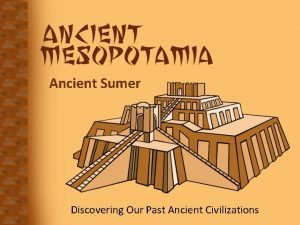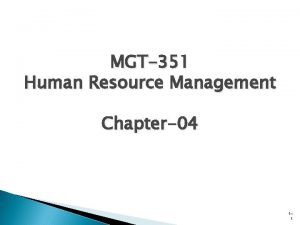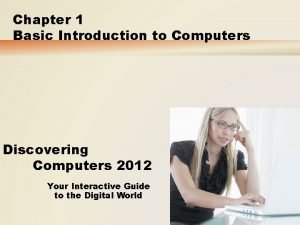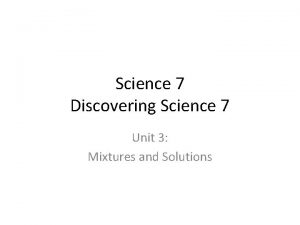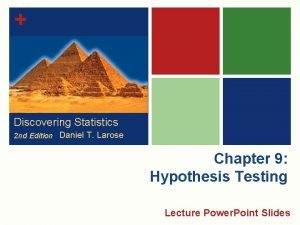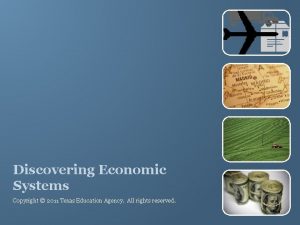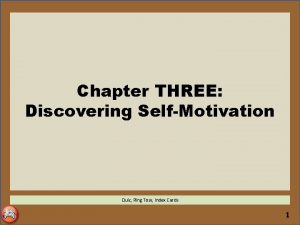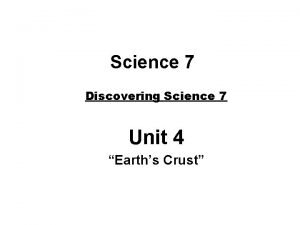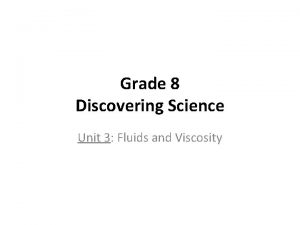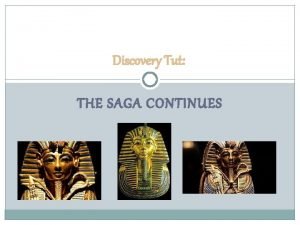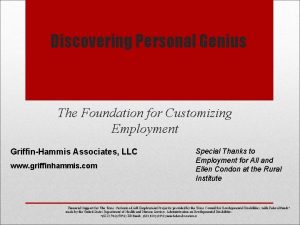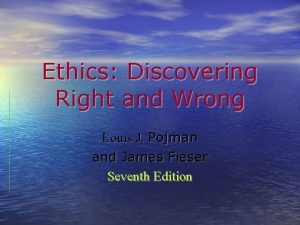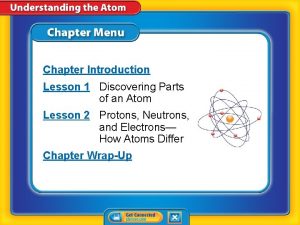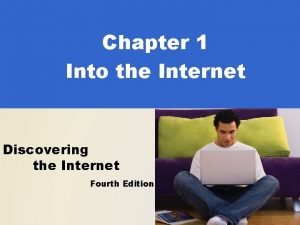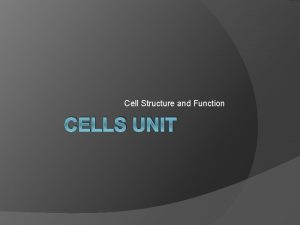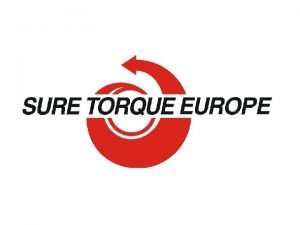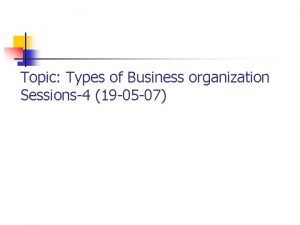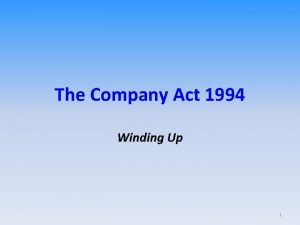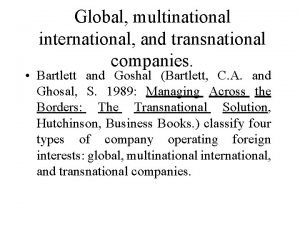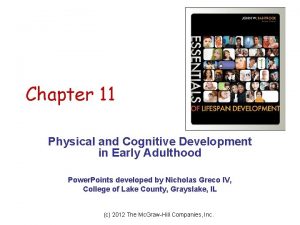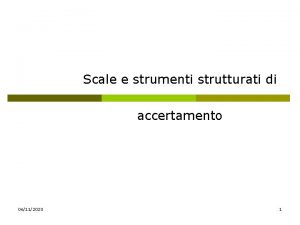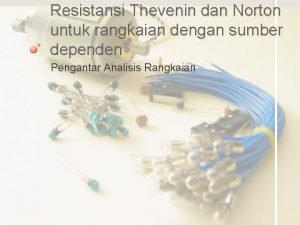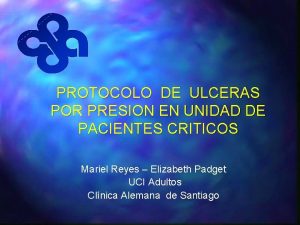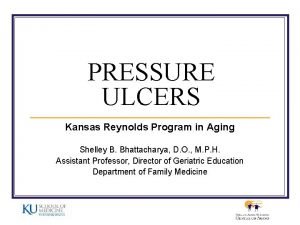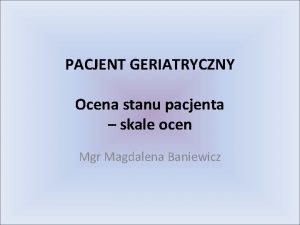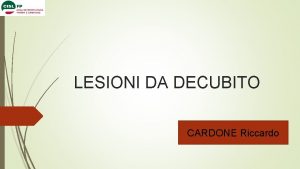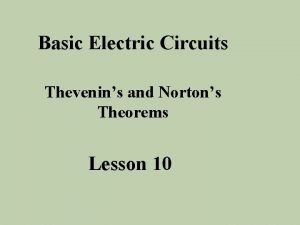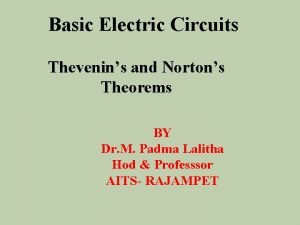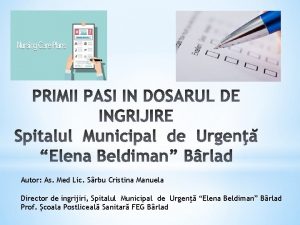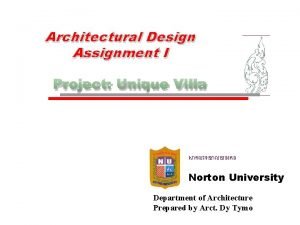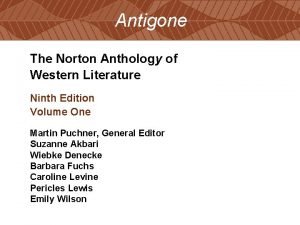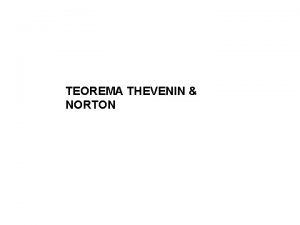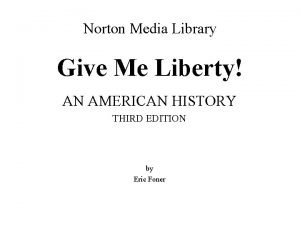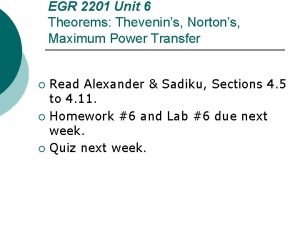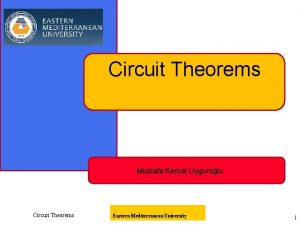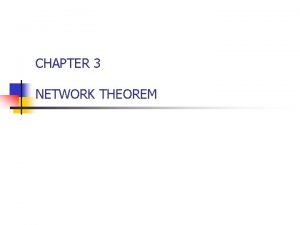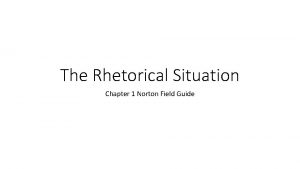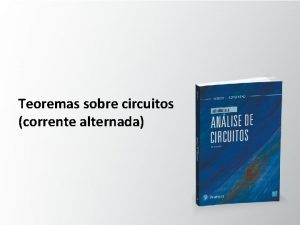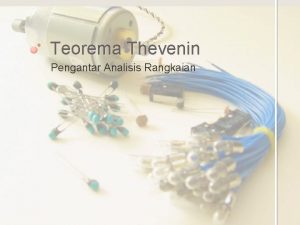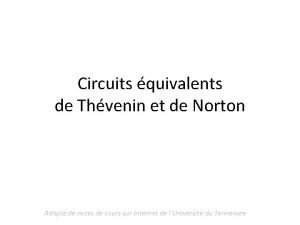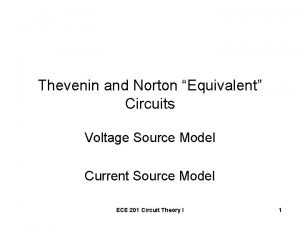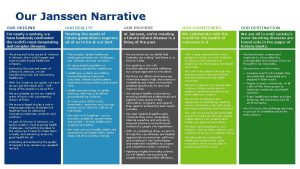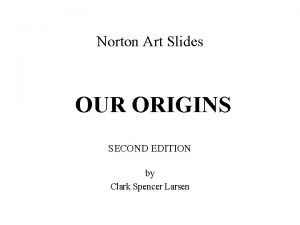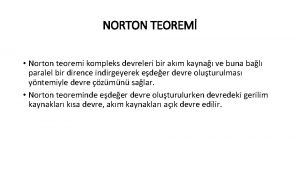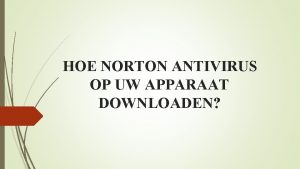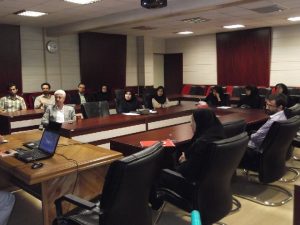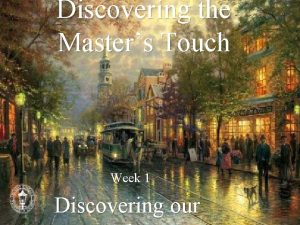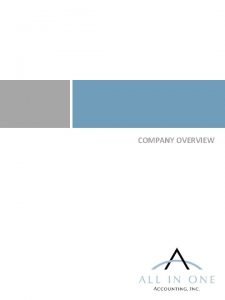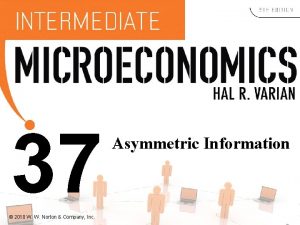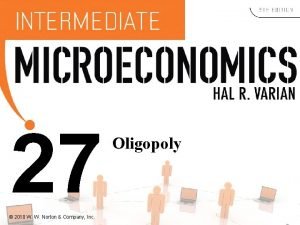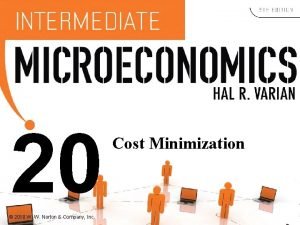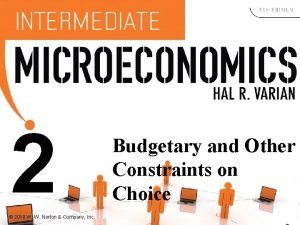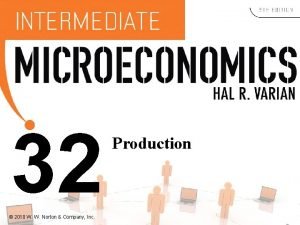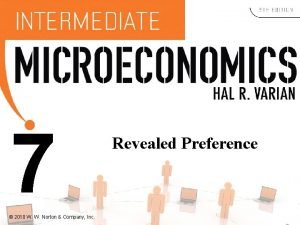W W Norton Company Our Origins Discovering Physical





















































































- Slides: 85

W. W. Norton & Company Our Origins Discovering Physical Anthropology Second Edition by Clark Spencer Larsen

Chapter 3 Clark Spencer Larsen Our Origins DISCOVERING PHYSICAL ANTHROPOLOGY Chapter 3 Genetics: Reproducing Life and Producing Variation © 2011 W. W. Norton & Company, Inc.

The Cell Two types of organisms – – Prokaryote (one cell) Eukaryote (many cells)

The Cell Two types of cells – – Somatic (body) cells Gamete (reproductive) cells

Figure 3. 3 f Somatic Cells—Skin Cells Our Origins, 2 nd Edition Copyright © 2011 W. W. Norton & Company

Figure 3. 4 a Gametes—Human Male Sex Cells Our Origins, 2 nd Edition Copyright © 2011 W. W. Norton & Company

The DNA Molecule Nuclear DNA – – – Contained within the nucleus of a cell Makes up chromosomes Complete set called genome

Figure 3. 5 a Chromosomes Our Origins, 2 nd Edition Copyright © 2011 W. W. Norton & Company

The DNA Molecule Mitochondrial DNA – – Contained in organelles in cell’s cytoplasm Inherited from the mother

The DNA Molecule DNA: the blueprint of life – – Chemical template for every aspect of organisms Double helix, ladderlike structure • • Ladder forms nucleotide Ladder base made up of four types – – Adenine, thymine, guanine, cytosine Complementary pairs (A&T, C&G)

Replicating the Code One function of the DNA molecule is replication – – Part of cell division—meiosis or mitosis DNA makes identical copies of itself Chromosome Types – Occur in homologous (matching) pairs • One in each pair from each parent

Figure 3. 12 a The Human Karyotype Consists of 46 Chromosomes of Various Sizes in 23 Pairs Our Origins, 2 nd Edition Copyright © 2011 W. W. Norton & Company

Replicating the Code Autosomes (nonsex chromosomes) Sex chromosomes – – – X, Y Females carry only X chromosomes, while males have one X and one Y chromosome The father determines the sex of the offspring

Mitosis: Production of Identical Somatic Cells DNA replication followed by one cell division Diploid cell (contains full set of chromosomes)

Figure 3. 14 a The Steps of Mitosis in Humans Our Origins, 2 nd Edition Copyright © 2011 W. W. Norton & Company

Meiosis: Production of Gametes One DNA replication followed by two cell divisions Gametes are haploid (half the number of chromosomes) Does not result in identical cell copies Errors can occur during meiosis – Nondisjunction, translocation

Figure 3. 15 Meiosis Our Origins, 2 nd Edition Copyright © 2011 W. W. Norton & Company

Producing Proteins are chemicals that make up tissues Also regulate functions, repair, and growth of tissues Proteins are made up of amino acids – Twenty different types

Producing Proteins Structural proteins responsible for physical characteristics Regulatory proteins responsible for functions: enzymes, hormones, antibodies Protein synthesis involves two steps. – – Transcription (unzipping, template for RNA) Translation (template attaches to ribosomes)

Producing Proteins DNA in protein synthesis is coding DNA. Most of human DNA is noncoding.

Genes: Structural and Regulatory Structural genes are responsible for body structures. Regulatory genes turn other genes on and off. – – Homeotic (Hox) genes Master genes

Figure 3. 21 Homeotic (Hox) Genes Our Origins, 2 nd Edition Copyright © 2011 W. W. Norton & Company

Polymorphisms Each gene has a specific physical location (locus). Loci are valuable to understanding genetic variation. Alleles on different loci are chemically alternative versions of the same gene.

Polymorphisms Some genes have one allele, while others have more – Mendel’s Law of Segregation: a parent passes one allele to offspring Single Nucleotide Polymorphisms (SNPs) – Make up variation between and within human populations

Figure 3. 23 Law of Segregation Our Origins, 2 nd Edition Copyright © 2011 W. W. Norton & Company

Polymorphisms Genotypes and phenotypes: genes and their physical expression – – Chemically identical alleles are termed homozygous. Chemically different alleles are heterozygous. • • Dominant allele is expressed in the pair. For a recessive allele to be expressed, there must be two copies.

Polygenic Variation and Pleiotropy Much of genetics is based on the “one gene, one protein” model. However, many traits are polygenic and are determined by genes at more than one locus.

Polygenic Variation and Pleiotropy For some traits, only some of the genetic variation can be calculated (heritability). – – Heritability ranges from 0 (none of the variation is genetic) to 1 (all of the variation is genetic). Only heritable traits respond to natural selection.

Polygenic Variation and Pleiotropy Measurement of heritability is complicated by pleiotropy, or a single allele having multiple effects. – Most complex traits are both pleiotropic and polygenic.

Chapter 3: Clicker Questions Human and chimpanzee DNA is about _____ similar. a) 100% b) 98% c) 90% d) 75%

Chapter 3: Clicker Questions If one side of the DNA ladder includes the sequence CTAATGT, the complementary base configuration for this sequence will be: a) GCAACGC. b) AGCCGTG. c) TAATGTC. d) GATTACA.

Chapter 3: Clicker Questions The human karyotype consists of ______ pairs of chromosomes. a) 23 b) 46 c) 48 d) 24

Chapter 3: Clicker Questions Blocks of genetic material that do not recombine and are passed on for generations are called: a) phenotypes. b) genotypes. c) karyotypes. d) haplotypes.

Chapter 3: Clicker Questions Regulatory or functional proteins include: a) lactase. b) testosterone. c) antibodies. d) All of the above

Chapter 3: Clicker Questions In protein synthesis, ______ refers to “unzipping” the DNA and ______ refers to the formation of polypeptide chains. a) division; replication b) transcription; translation c) meiosis; mitosis d) translocation; nondisjunction

Chapter 3: Clicker Questions Prokaryotes have multiple cells while eukaryotes have one. a) True b) False

Art Presentation Slides Chapter 3

Chapter Opener Our Origins, 2 nd Edition Copyright © 2011 W. W. Norton & Company

Figure 3. 1 Cells and Their Organelles Our Origins, 2 nd Edition Copyright © 2011 W. W. Norton & Company

Figure 3. 2 a Prokaryotes and Eukaryotes Our Origins, 2 nd Edition Copyright © 2011 W. W. Norton & Company

Figure 3. 2 b A Bacteria that Aids Digestion in the Intestines of Mammals, Including Humans Our Origins, 2 nd Edition Copyright © 2011 W. W. Norton & Company

Figure 3. 2 c The Eukaryotic Cells of a Primate’s Kidney Our Origins, 2 nd Edition Copyright © 2011 W. W. Norton & Company

Figure 3. 3 a Somatic Cells—A Heart Muscle Our Origins, 2 nd Edition Copyright © 2011 W. W. Norton & Company

Figure 3. 3 b Somatic Cells—Brain Tissue Our Origins, 2 nd Edition Copyright © 2011 W. W. Norton & Company

Figure 3. 3 c Somatic Cells—Motor Neurons (Nerve Cells) Our Origins, 2 nd Edition Copyright © 2011 W. W. Norton & Company

Figure 3. 3 d Somatic Cells—Red Blood Cells (the Larger Cells Are White Blood Cells, and the Small Dots Are Platelets) Our Origins, 2 nd Edition Copyright © 2011 W. W. Norton & Company

Figure 3. 3 e Somatic Cells—Osteocyte (Bone Cell) Our Origins, 2 nd Edition Copyright © 2011 W. W. Norton & Company

Figure 3. 3 f Somatic Cells—Skin Cells Our Origins, 2 nd Edition Copyright © 2011 W. W. Norton & Company

Figure 3. 4 a Gametes—Human Male Sex Cells Our Origins, 2 nd Edition Copyright © 2011 W. W. Norton & Company

Figure 3. 4 b Gametes—A Human Female Sex Cell Our Origins, 2 nd Edition Copyright © 2011 W. W. Norton & Company

Figure 3. 4 c Gametes—Ovum Our Origins, 2 nd Edition Copyright © 2011 W. W. Norton & Company

Figure 3. 5 a Chromosomes Our Origins, 2 nd Edition Copyright © 2011 W. W. Norton & Company

Figure 3. 5 b Number of Chromosomes Our Origins, 2 nd Edition Copyright © 2011 W. W. Norton & Company

Figure 3. 6 Nuclear DNA Our Origins, 2 nd Edition Copyright © 2011 W. W. Norton & Company

Figure 3. 7 Mitochondrion Our Origins, 2 nd Edition Copyright © 2011 W. W. Norton & Company

Figure 3. 8 The Structure of DNA Our Origins, 2 nd Edition Copyright © 2011 W. W. Norton & Company

Figure 3. 9 Nucleotide Our Origins, 2 nd Edition Copyright © 2011 W. W. Norton & Company

Figure 3. 10 The Steps of DNA Replication Our Origins, 2 nd Edition Copyright © 2011 W. W. Norton & Company

Human Chromosome 3 Our Origins, 2 nd Edition Copyright © 2011 W. W. Norton & Company

Normal Bone, on the Left, and Osteoporotic Bone, on the Right Our Origins, 2 nd Edition Copyright © 2011 W. W. Norton & Company

DNA from 4, 000 -Year-Old Human Hair Our Origins, 2 nd Edition Copyright © 2011 W. W. Norton & Company

Figure 3. 11 Chromosome Pairs Our Origins, 2 nd Edition Copyright © 2011 W. W. Norton & Company

Figure 3. 12 a The Human Karyotype Consists of 46 Chromosomes of Various Sizes in 23 Pairs Our Origins, 2 nd Edition Copyright © 2011 W. W. Norton & Company

Figure 3. 12 b In this Karyotype, the Pair Labeled “XY” Belong to a Human Male Our Origins, 2 nd Edition Copyright © 2011 W. W. Norton & Company

Figure 3. 13 Embryonic Development Our Origins, 2 nd Edition Copyright © 2011 W. W. Norton & Company

Figure 3. 14 a The Steps of Mitosis in Humans Our Origins, 2 nd Edition Copyright © 2011 W. W. Norton & Company

Figure 3. 14 b A Human Skin Cell Undergoing Mitosis, Dividing into Two New Daughter Cells Our Origins, 2 nd Edition Copyright © 2011 W. W. Norton & Company

The Skeletons of Native Americans Our Origins, 2 nd Edition Copyright © 2011 W. W. Norton & Company

Figure 3. 15 Meiosis Our Origins, 2 nd Edition Copyright © 2011 W. W. Norton & Company

Figure 3. 16 a The Law of Independent Assortment, Asserts Our Origins, 2 nd Edition Copyright © 2011 W. W. Norton & Company

Figure 3. 16 b Hair Color, for Example, Is Inherited Independently from Eye Color Our Origins, 2 nd Edition Copyright © 2011 W. W. Norton & Company

Figure 3. 17 Linkage Our Origins, 2 nd Edition Copyright © 2011 W. W. Norton & Company

Figure 3. 18 a Structural Proteins—Keratin Our Origins, 2 nd Edition Copyright © 2011 W. W. Norton & Company

Figure 3. 18 b Structural Proteins-Collagen Our Origins, 2 nd Edition Copyright © 2011 W. W. Norton & Company

Figure 3. 19 a Protein Synthesis Our Origins, 2 nd Edition Copyright © 2011 W. W. Norton & Company

Figure 3. 19 b Protein Synthesis Our Origins, 2 nd Edition Copyright © 2011 W. W. Norton & Company

Figure 3. 20 a The Hand on the Right Shows Normal Finger Growth. The Hand on the Left Has Much Longer and Thinner Fingers. Our Origins, 2 nd Edition Copyright © 2011 W. W. Norton & Company

Figure 3. 20 b Marfan Syndrome Our Origins, 2 nd Edition Copyright © 2011 W. W. Norton & Company

Figure 3. 21 Homeotic (Hox) Genes Our Origins, 2 nd Edition Copyright © 2011 W. W. Norton & Company

Figure 3. 22 a Antibody–Antigen System Our Origins, 2 nd Edition Copyright © 2011 W. W. Norton & Company

Figure 3. 22 b Antibody–Antigen System Our Origins, 2 nd Edition Copyright © 2011 W. W. Norton & Company

Figure 3. 23 Law of Segregation Our Origins, 2 nd Edition Copyright © 2011 W. W. Norton & Company

Figure 3. 24 Polygenic Traits and Pleiotropic Genes Our Origins, 2 nd Edition Copyright © 2011 W. W. Norton & Company

Our Origins Study. Space Quizzes Ebook Links Outlines Flash. Cards Google Earth Anthro. Tours http: //www. wwnorton. com/college/anthro/our-origins 2

W. W. Norton & Company Independent and Employee Owned This concludes the slide set for Chapter 3 Our Origins Discovering Physical Anthropology Second Edition by Clark Spencer Larsen
 Discovering our past ancient civilizations
Discovering our past ancient civilizations Job description and job specification in hrm
Job description and job specification in hrm Discovering the humanities 3rd edition
Discovering the humanities 3rd edition Discovering computers 2018 ppt download
Discovering computers 2018 ppt download Discovering computers 2016
Discovering computers 2016 Discovering computers
Discovering computers What is self motivation?
What is self motivation? Discovering science 7
Discovering science 7 P test in statistics
P test in statistics Discovering economic systems guided practice
Discovering economic systems guided practice Discovering computers 2011
Discovering computers 2011 Self motivation quiz
Self motivation quiz Discovering computers 2018 chapter 1
Discovering computers 2018 chapter 1 Rock vs mineral
Rock vs mineral Discovering computer
Discovering computer Discovering engineering
Discovering engineering Discovering american ideals in primary sources
Discovering american ideals in primary sources Teachers discovering computers
Teachers discovering computers Pioneer species
Pioneer species Grade 8 science unit 3
Grade 8 science unit 3 Amenhotop
Amenhotop Discovering personal genius
Discovering personal genius Tactile output
Tactile output Discovering computers 2012
Discovering computers 2012 Ethics discovering right and wrong
Ethics discovering right and wrong Chapter 7 lesson 1 discovering parts of an atom answer key
Chapter 7 lesson 1 discovering parts of an atom answer key Discovering the internet
Discovering the internet Discovering cells
Discovering cells Thinking affects our language, which then affects our:
Thinking affects our language, which then affects our: Our census our future
Our census our future Christ be our light shine in our hearts
Christ be our light shine in our hearts Our life is what our thoughts make it
Our life is what our thoughts make it We bow our hearts
We bow our hearts Our census our future
Our census our future Our life is what our thoughts make it
Our life is what our thoughts make it D h lawrence was
D h lawrence was Awareness of ourselves and our environment is
Awareness of ourselves and our environment is Our awareness of ourselves and our environment
Our awareness of ourselves and our environment God our father christ our brother
God our father christ our brother Our future is in our hands quotes
Our future is in our hands quotes Our awareness of ourselves and our environment
Our awareness of ourselves and our environment Awareness of ourselves and our environment is
Awareness of ourselves and our environment is Our company has been established
Our company has been established Partnership vs limited company
Partnership vs limited company Winding up vs liquidation
Winding up vs liquidation Consolidated balance sheet meaning
Consolidated balance sheet meaning Multinational vs international
Multinational vs international What type of company was the virginia company
What type of company was the virginia company Most of us reach our peak physical performance
Most of us reach our peak physical performance Norton skala
Norton skala Obrasci zdravstvenog funkcioniranja
Obrasci zdravstvenog funkcioniranja Norton anthology victorian age
Norton anthology victorian age Strategy maps template
Strategy maps template Braden scala di valutazione
Braden scala di valutazione Rangkaian thevenin dan norton
Rangkaian thevenin dan norton Escala de norton puntuacion
Escala de norton puntuacion Norton scale
Norton scale Scala di norton
Scala di norton Skala barthel punktacja
Skala barthel punktacja Couloir norton everest
Couloir norton everest Scala braden q pediatrica
Scala braden q pediatrica Bioptron lámpa javítás
Bioptron lámpa javítás Thevenin theorem examples
Thevenin theorem examples Norton theorem
Norton theorem Grila lui norton
Grila lui norton Assignment norton university
Assignment norton university The norton anthology of western literature 9th edition
The norton anthology of western literature 9th edition Admission funda
Admission funda Contoh soal teorema norton
Contoh soal teorema norton Norton university
Norton university Norton give me liberty
Norton give me liberty Application of norton's theorem
Application of norton's theorem Norton theorem
Norton theorem Find the norton equivalent circuit at terminals a-b
Find the norton equivalent circuit at terminals a-b Edward norton lorenz
Edward norton lorenz Norton field guide literacy narrative
Norton field guide literacy narrative Norton rhetorical strategies
Norton rhetorical strategies Chipping norton war memorial hospital
Chipping norton war memorial hospital Teorema da máxima transferência de potência
Teorema da máxima transferência de potência Teorema thevenin
Teorema thevenin Seven essentials
Seven essentials Thvenin
Thvenin John d. norton
John d. norton Thevenin and norton equivalent
Thevenin and norton equivalent Tracy norton
Tracy norton Norton juster biography
Norton juster biography
